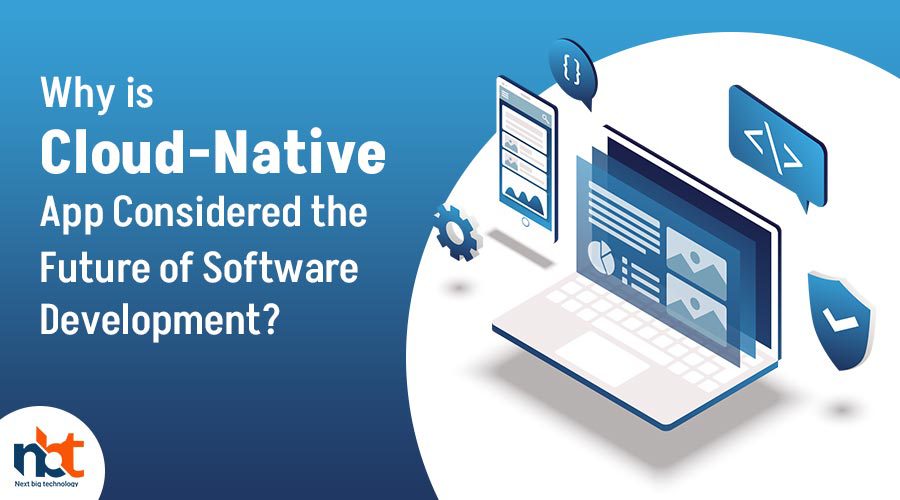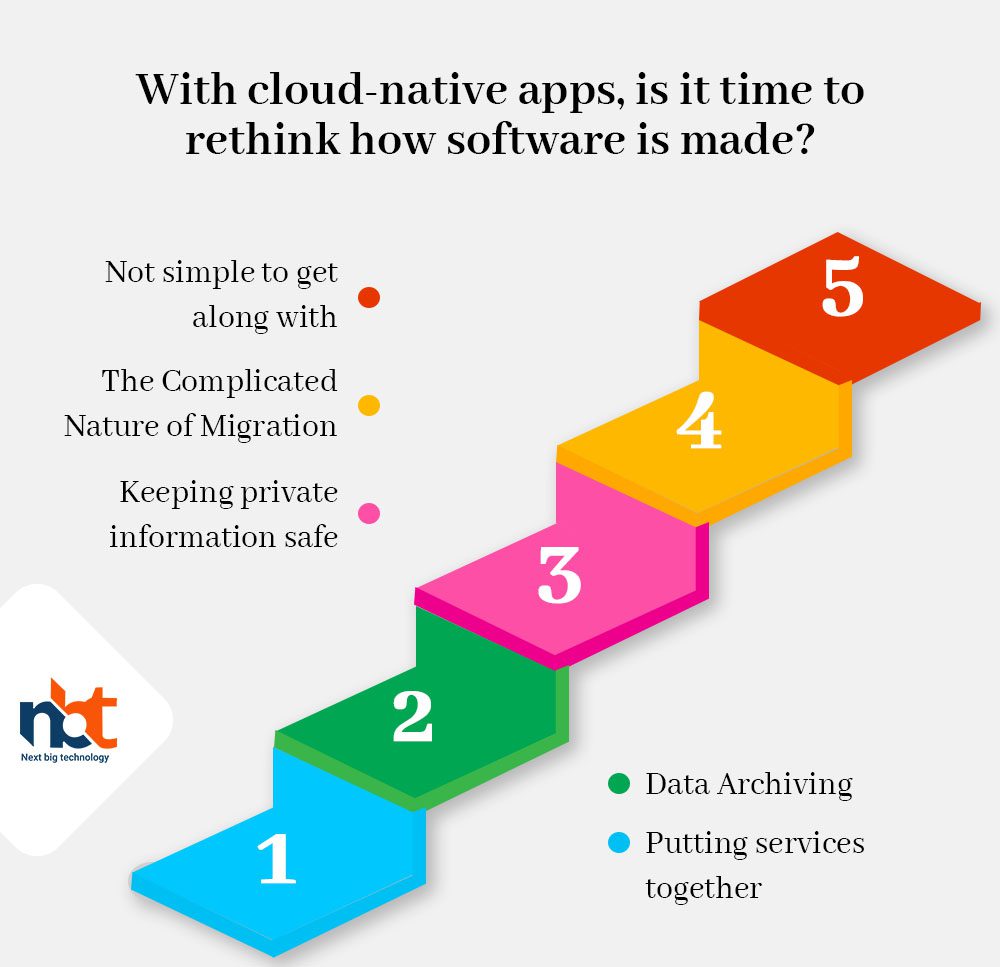As the term “cloud-native” suggests, it refers to apps that are made for and work best in the cloud. Improve morale at work by making it easier to make cloud-native apps and by making the infrastructure and buildings more flexible. These apps also help businesses deal with threats that could be disruptive.
Uber, Pinterest, and Netflix, all big names in their industries, are expanding their cloud-native capabilities to change how technology works. The research shows that by 2020, 32% of businesses will use cloud-native.
Table of Contents
Why is developing cloud-native apps the way of the future in the IT industry?
“Cloud-native app development” should be defined.
In the broadest sense, “cloud-native” refers to a new way to build applications that uses cloud computing from the beginning. Instead of being on a local server, the software is kept in the cloud.
But when talking about cloud-native development, the important thing to consider is not “where” but “how.” This is because the model takes a different approach to software development than we are used to.
The most important parts of cloud-native apps
Without further ado, let’s talk about what makes cloud-native apps unique.
Containers
A cloud-native app comprises microservices and containers, both of which can be scaled up or down independently. The containers take care of the scaling so the infrastructure can work best for its use.
Cloud-native applications that are polyglot rely on frameworks and languages for each service they offer. Since the app’s services are only loosely connected, the developers can use many different frameworks, programming languages, and runtimes.
The server and the operating system
Containerization means that cloud-native apps can run regardless of their servers’ hardware or operating system. So, they are working on a level that is not concrete.
DevOps Methods
In a cloud-native app, each service has its life cycle. DevOps runs these operations. Microservices are spread out and connected all the time so that cloud services can manage these applications.
Top 5 Reasons to Build Apps for the Cloud
Software that was made to run in the cloud has many benefits:
Auto-scaling
Because of this, many businesses choose cloud-native solutions instead. Some parts of the system can be programmed to use the auto-scaling feature when the system is being set up. When there is a lot of traffic, these parts will automatically grow to meet the demand.
Tools for administration and keeping track
New and better tools have made auditing and keeping an eye on cloud-native applications easier. Containers and Microservices can be kept an eye on with software like AppDynamic, Datalog, and Newrelic.
Affordability
When there are enough cloud-native tools, infrastructure and tools can be standardized. Together with the fact that cloud-native architecture is open source, this means that businesses can save even more money. For example, companies can now use a pay-per-use model to estimate time in milliseconds because servers are no longer needed, and other things have more space.
Methods You Can Use
With Kubernetes and microservice design, you can make software that can handle problems. They can heal themselves in different ways. For example, when one data centre goes down, the software moves the processing to another. Because of this ability to handle outages, failures are less likely to happen.
That gives teams more time to work on getting things done.
Instead of focusing on infrastructure maintenance, the team could just work on the most important business needs. As a result, developers can use the system no matter where they are. This means that the work gets done faster and more efficiently.
With cloud-native apps, is it time to rethink how software is made?
If you ask software developers who already use cloud-native technology, they will tell you that it is the way of the future.
Considering all of these pros, it’s easy to see why this app is a model for the industry.
There are, of course, a few things to get past first:
Putting services together
It may be hard for the people who make cloud-native apps to connect the different services that make up the app. This is because they need to ensure enough resources are given to each service.
They should try to reduce the number of services because adding more services can make integration and complexity more difficult. Any risks that come with managing and building these apps will be taken care of by a reputable cloud-native developer.
Data Archiving
Most serverless operations and containers deployed using an immutable infrastructure paradigm can’t store data permanently. This is because all of its internal information is lost when the programme is shut down.
Keeping private information safe
A cloud-native software developer must know how to keep sensitive information safe. This is important during times of change, operation, and downtime. A few tools, like IBM Key Protect, Intel SGX, and IBM Certificate Manager, are used by developers to ensure that their data is safe.
The Complicated Nature of Migration
If a cloud-native app is shared on a different cloud service, it’s possible that the APIs won’t work right on that cloud. This is the case when a cloud’s native API can only be used with that cloud provider. Also, these APIs can’t be used on their own.
Not simple to get along with
When working on specific apps with many development teams, getting everyone on the same page can be hard. Likewise, experts may find it hard to coordinate their work when using the DevOps pipeline.
How to Make Your First App That Runs in the Cloud
As a safety measure against the spread of the Coronavirus, many companies are letting their workers work from home. In addition, many tech companies are now switching to cloud-based solutions because it’s getting harder and harder to keep data safe.
In conclusion
To make a cloud-optimized app, you must first decide which cloud service will work best. There may be one or more cloud services chosen. But before you choose a service, you must do a lot of research.
You can talk to the best cloud experts in the business with consultations. The group can look at the needs of your app and recommend the best cloud service from which to start your cloud-native app project.
Thanks for reading our post “Why is Cloud-Native App Considered the Future of Software Development?”, please connect with us for any further inquiry. We are Next Big Technology, a leading web & Mobile Application Development Company. We build high-quality applications to full fill all your business needs






















